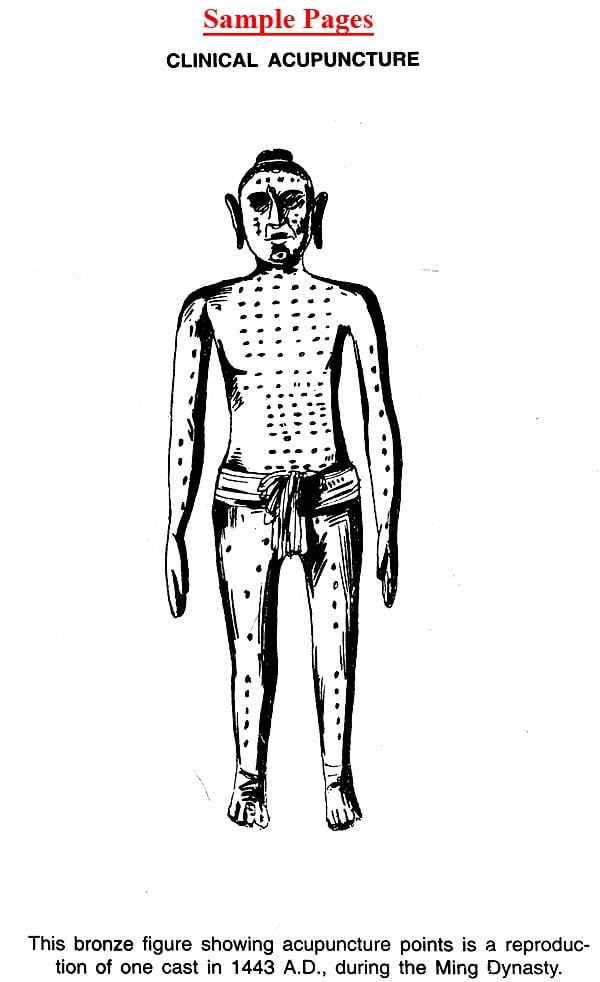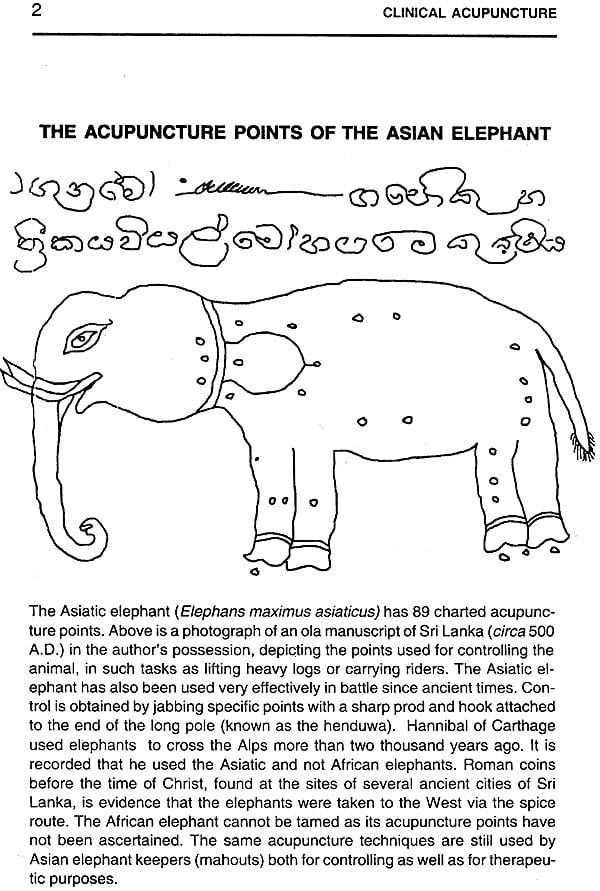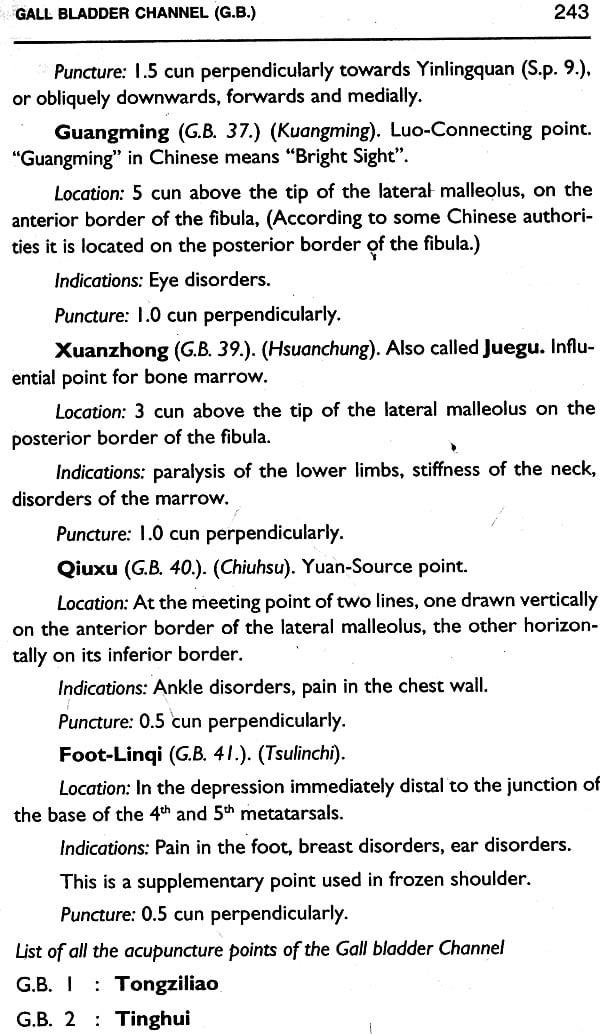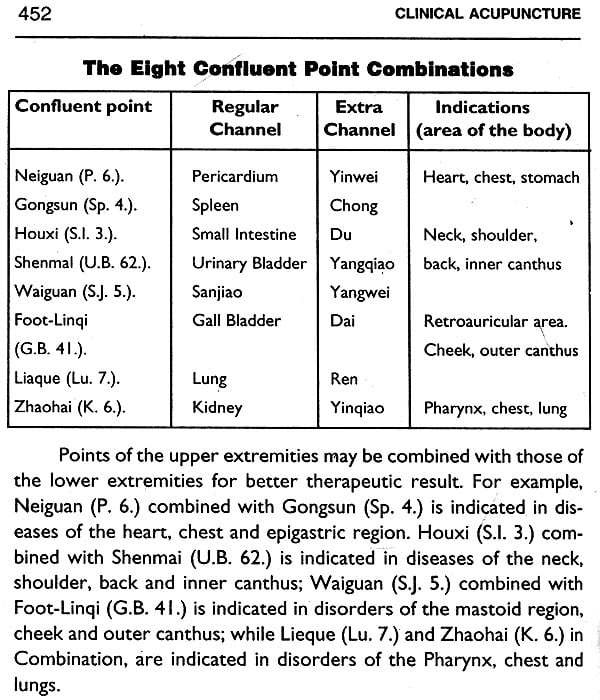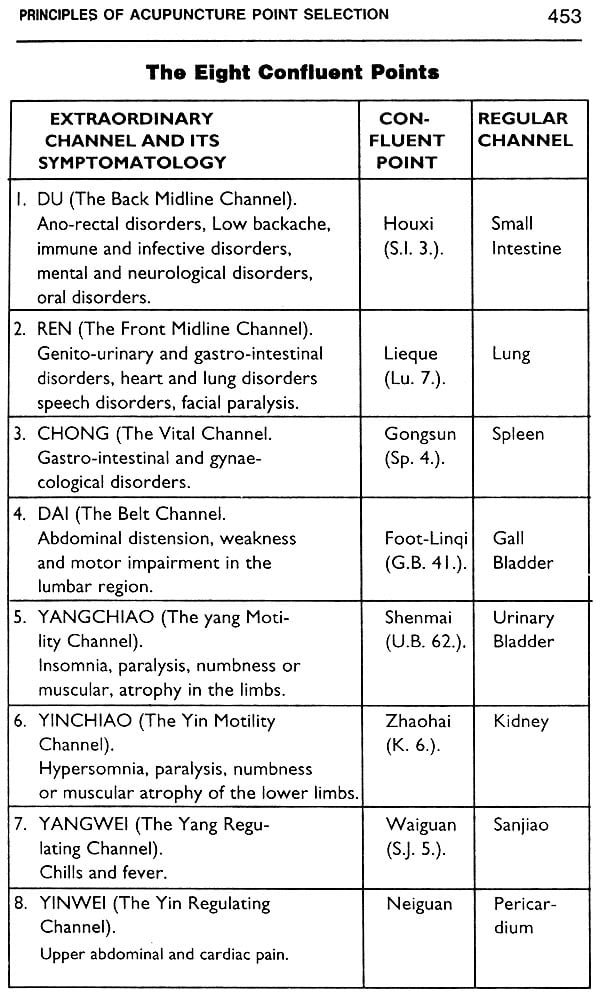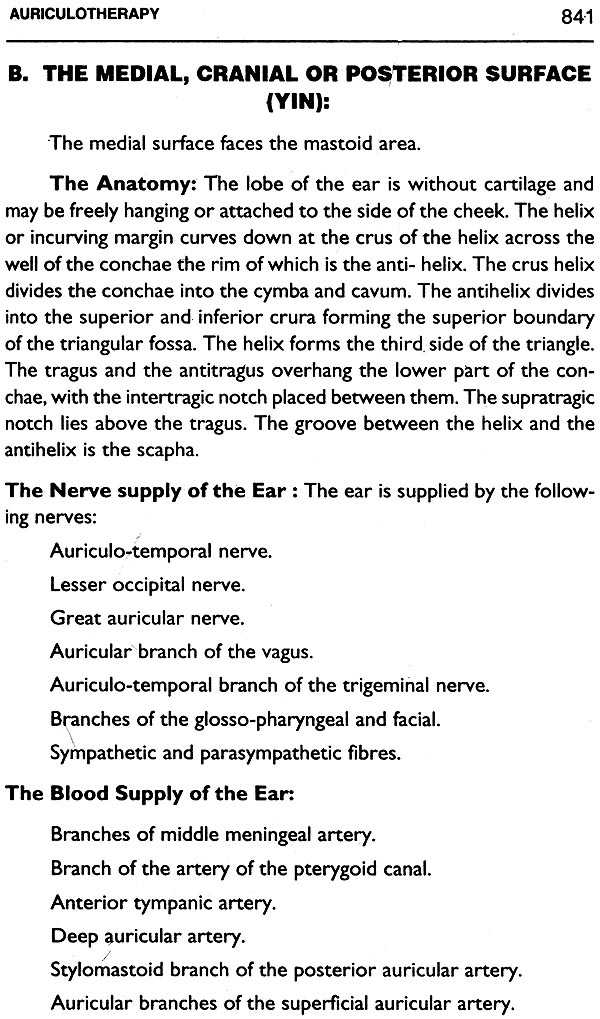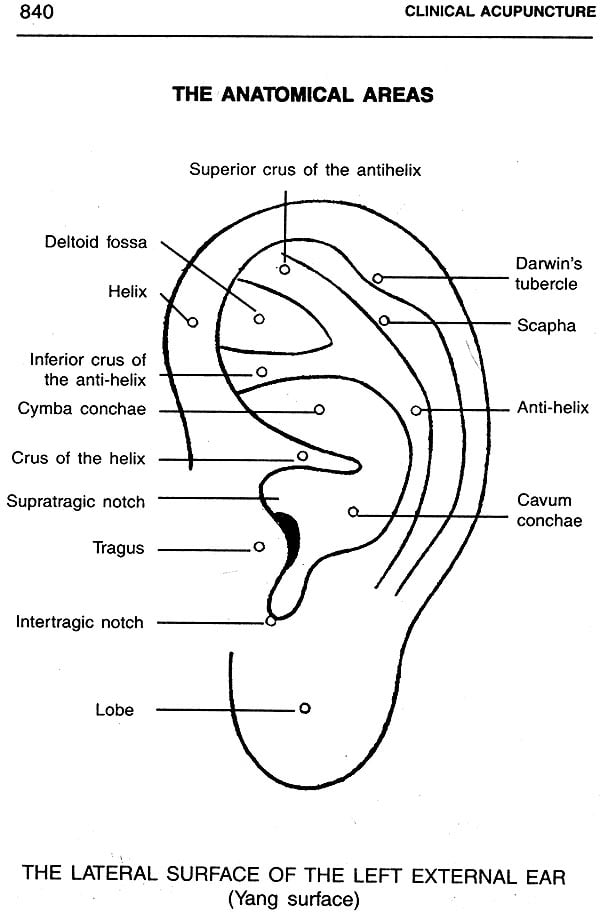
Clinical Acupuncture
Book Specification
| Item Code: | NAH838 |
| Author: | Anton Jayasuriya |
| Publisher: | B. Jain Publishers (P) Ltd |
| Language: | English |
| Edition: | 2017 |
| ISBN: | 9788131903278(Without Charts) 9788131902677(With Coloured Acupuncture Charts) |
| Pages: | 1058 (Throughout B/W Illustrations) |
| Cover: | Hardcover |
| Other Details | 9.0 inch X 6.0 inch |
| Weight | 1 kg |
Book Description
It is indeed always a pleasant thought to be asked to preface a book-one's mind wanders over all the facets which the book itself deals with, and also into the byways which lead from the particular into the wider scene. After several long years of exposure to the practice of acupuncture, both the writer and the author have explored in detail the subject itself, and have thus wandered, sometimes unwittingly, into the broader scene of communication with colleagues, students, patients, and the community at large- both national and international. Mainly these contacts are enormously rewarding-but even the occasional rebuffs have the benefit of making us look at ourselves critically at what we are doing.
After many years what has been learned and achieved? Modern theories about the physiology of acupuncture have been ex- pounded, trialled, and accepted as probable mechanisms for some physiological actions of acupuncture. Apart from the Gate Control Theory of Melzack and Wall, the neurotransmitter theories certainly have suggested that acupuncture triggers central neurological mechanisms, which cause alterations in a wide spectrum of neurotransmitter substances, which in turn may set the scene for a return to normal physiology within the body i.e. homeostasis. However; as yet, no one definitive theory explains all the observed and varied phenomena.
On the other side of the story, years of clinical practice have positively identified that acupuncture has a definite place in the health care of all peoples of the world, both in the East and the West, and that it can be integrated successfully with modern medical practice. In properly trained hands it is inexpensive, harm- less-but essentially effective over a large range of common disorders, and can be used, together with modern diagnostic methods, to help reduce the increasing upsurge of side effects (some serious) produced by so many of our potent modern chemotherapeutic agents. "New methods of stimulating the Acupuncture points have been devised including ultrasound and laser therapy. Laser therapy in particular has been shown to be safe and effective, and where Hepatitis B and AIDS are a risk with needle puncture, laser therapy is a viable alternative. This is surely a marriage of modern technology and an ancient art, using the best of the old and the new together for the benefit of all, looking towards health care for all people by the year 2000."
The new edition of Clinical Acupuncture, now translated to five languages, again flowing from the voluminous and seemingly never ending pen of Professor Anton Jayasuriya, is a further meaningful step in keeping students of this ancient art up to date with clear, concise information which should help them develop, with time, as well-qualified acupuncturists. In doing so, Professor Jayasuriya is making available to the world at large valuable material for the benefit of the whole of mankind.
(to the First Edition)
Three to four thousand years after the Yellow Emperor's Canon on Acupuncture, modern doctors are now rediscovering acupuncture. While China leads the world today, it is important that centres outside China replicate their results; the essence of the scientific method is replication. Moreover, sceptics outside China will only accept their results if they are repeated in other countries. Hence the experience of healers in Sri Lanka, as summarized in this book, is an important contribution to the scientific world.
This book has been written with the experience of treating over 250,000 patients in Sri Lanka with methods learned in China, and of teaching over six thousand acupuncturists from many countries. I have spent several months at the 'Colombo South General Hospital', Kalubowila, and have observed over 500 patients a day being treated with acupuncture alone. I also saw many local and foreign students being trained in acupuncture therapy. It was evident that the training program was an excellent one, deriving, from two factors: the huge patient load, and the superb training methods of Professor Anton Jayasuriya. Sri Lanka has, no doubt, the best acupuncture teaching centre in the world.
Of particular interest to me, of course, was the performing of surgery using acupuncture analgesia. The methodology of acupuncture analgesia, ",1 saw done in Colombo seems to be more acceptable to the World)at I .was shown In The People's
Republic of China.
In Colombo, some of the result acupuncture therapy were truly amazing. For example: I daw 6 severe cases of acute bronchial asthma restored to not . .mal breathing within 10 minutes; acupuncture was used, instead of noradrenalin. I observed a case of frozen shoulder of 8 month's duration completely cured within 15 minutes (far more effective than steroids). I saw a severely wasted leg of a polio victim (of 15 years duration), completely restored to normal after 80 days of acupuncture (a cure unheard of in Western medicine). The "cure" rate, anecdotally, seemed very high (more than 60% of cases) in many diseases such as asthma, psoriasis, migraine and backache. In other diseases such as epilepsy, neuromuscular disorders and mental disorders there were cures, but the frequency of cure was somewhat lower- In China I was shown similar results, but I could not verify their claims because of the language barrier; in Sri Lanka a majority of the patients spoke English.
As I stated, the evidence I observed was only anecdotal. Although many controlled studies have been done to validate acupuncture analgesia in many research laboratories throughout the world, much work is needed to verify scientifically the effectiveness of acupuncture in curing disease. I have no doubt that this book will serve to inspire clinicians and scientists to study acupuncture therapy of disease in controlled experiments.
It domes not worry me much, if acupuncture yet defies scientific explanation; after all, Einstein's discoveries were made by studying the exceptions to Maxwell's equations. If acupuncture is an exception to the Western medical model, all the better; perhaps this will be the chance for a major breakthrough in the further understanding of the human body complex.
The' barefoot doctor system still forms the backbone of the medical services in rural China. In many backward areas of the world such as countries in Asia, Africa and Latin America, and even in the affluent countries with large rural areas cut off from the population centres, the barefoot doctor experiment could be adopted with a certain degree of success. A very large part of the world's population lives, in fact, in rural and sometimes inaccessible areas where Western medicine, due to the constraints of its sophistication, cannot easily be made available. The most potent therapeutic weapon of the barefoot doctor is the acupuncture needle. It is safe, simple, effective and economical, and can be used by personnel after a short period of training. Acupuncture, therefore, is the short term, as well as the long term answer, to the health needs of the greater part of the Third World in many everyday illnesses.
This is not to say that acupuncture should be used only in the absence of Western medicine. Many people, even in the West, are becoming more aware of the manifold and horrendous complications of drug therapy, and are seeking alternative forms of therapy. But a large quantity of drugs is still consumed as home remedies in minor self-limiting illnesses like the common cold, tonsillitis, insomnia, constipation, headache and gastro-enteritis. It is incumbent for the cultured mind of today to have an elementary under standing of acupuncture and to employ it in such common disorders, before reaching for the bottle of pills. Acupuncture is eminently applicable also in such modern situations as submarine missions, off-shore oil rigs, polar research missions and space travel", where groups of workers are cut off from the rest of the world, for prolonged periods.
This elementary book is written mainly as a guide to the bare- foot doctors of the world. It is hoped that it will also serve as a The Russian cosmonauts carry acupuncture needles on their space missions, they are prohibited to take any medications.reference to every initiated person for methods of first aid in minor and uncomplicated disorders. It is also directed at the Western trained physician as a first step in understanding the methodology of acupuncture, which can be usefully combined with scientific medicine, to create a wide-spectrum weapon in the fight against disease. In modern China the approach today is to combine Western with traditional methods, both in diagnosis and therapy (and this in fact is the approach of the teachers at the Academy of Traditional Medicine in Beijing). The Western trained doctor will find this approach particularly meaningful as the diseases discussed in this book are in the terminology and semantics familiar to him.
This book is the synthesis of the experience of treating a very large number of patients daily at the Institute of Acupuncture of the Colombo South General Hospital, and the teachings of the great masters at the Academy of Traditional Medicine in Peking, the Institute of Physiology, Shanghai, and other centres in the People's Republic of China, where I had the privilege to study. This book, in fact, is a synopsis of the short teaching courses conducted by us at the Institute of Acupuncture, Sri Lanka".
I wish to place on record my grateful thanks to the World Health Organization for the granting of a Fellowship in 1974 which resulted in my obtaining the Diploma in Acupuncture in Peking, and to the Foreign Office of the People's Republic of China for invitations in 1976, 1977 and again in 1979 to study the latest advances in acupuncture therapy and anaesthesia in China.
| A Brief History | 1 |
| Modern Scientific Views | 19 |
| Materials and Techniques | 35 |
| Precautions | 65 |
| Anatomy of Acupuncture | 87 |
| The System of Channels and Collaterals | 115 |
| Lung Channel (Lu.) | 117 |
| Large Intestine Channel (LI.) | 133 |
| Stomach Channel (St.) | 143 |
| Spleen Channel (Sp.) | 161 |
| Heart Channel (H.) | 169 |
| Small Intestine (Channel (S.I.) | 177 |
| Urinary Bladder Channel (U.B.) | 187 |
| Kidney Channel (K.) | 207 |
| Pericardium Channel (P.) | 215 |
| Sanjiao Channel (S.J.) | 223 |
| Gall Bladder Channel (G.B.) | 233 |
| Liver Channel (Liv.) | 249 |
| Du Channel (Du) 1 | 255 |
| Ren Channel (Ren.) I | 271 |
| The Extraordinary Points (Ex.) | 283 |
| The Un-numbered Extraordinary Points (U.Ex.) | 297 |
| Philosophical Concepts | 301 |
| Traditional Chinese Diagnosis | 357 |
| The Circulation of Vital Energy (Qi) | 415 |
| The Principles of Acupuncture Point Selection | 435 |
| Stematic Therapy | 473 |
| Diseases of the Nervous System | 477 |
| Respiratory Disorders | 501 |
| Cardiovascular Disorders | 513 |
| Blood Disorders | 523 |
| Disorders of the Gastrointestinal System | 525 |
| Hepatic. Biliary. Splenic And Pancreatic Disorders | 541 |
| Genitourinary Disorders | 551 |
| Disorders of Women | 559 |
| Locomotor Disorders-Diseases of Soft Tissues. Muscles Bones and Joints | 571 |
| Skin Disorders | 589 |
| Ear Disorders | 601 |
| Eye Disorders | 607 |
| Endocrine Disorders | 615 |
| Psychiatric Disorders | 621 |
| Disorders of Children | 629 |
| Acute Disorders | 635 |
| Traditional Chinese Therapeutics | 645 |
| The Ancillary Techniques Of Acupuncture | 757 |
| Acupuncture Analgesia In Childbirth | 817 |
| Prognosis of Disease with Acupuncture | 827 |
| Auriculotherapy | 835 |
| Scalp Acupuncture | 861 |
| Locations of All Acupuncture Points of the 14 Channels | 869 |
| Glossary of Common Terms used in Acupuncture Practice | 915 |
| Appendix on Complications | 931 |
| Tai Yun - The Great 60 Year Chinese Calendar | 939 |
| Some Common Western Medical (Allopathic) Disorders with their Traditional Chinese and Homoeopathic Equivalents | 964 |
| The Chinese Language | 1023 |
| Some Common Ideograms and their Meanings | 1026 |
| Correspondense of the 5 Elements | 103 I |
| Nature | 1032 |
| Health Care/Medicine | 1033 |
| Numbers | 1034 |
